This is the main gate of Osaka Castle, Otemon-gate. It was built in 1628 by the second owner of this castle, the Tokugawa shogunate. Many other parts of its construction have burned down, but this gate has remained.
I’ll talk about part 2 of the story of Osaka Castle which follows the one I wrote previously. URL: https://howtojapan.net/2022/09/26/osaka-castle-part-1/
You can see many pine trees on both sides along the approaching path. For the reason why pine trees were planted in Japanese castles, take a look at the article below that I wrote. URL: https://howtojapan.net/2022/08/04/why-are-there-so-many-pine-trees-around-japanese-castles/
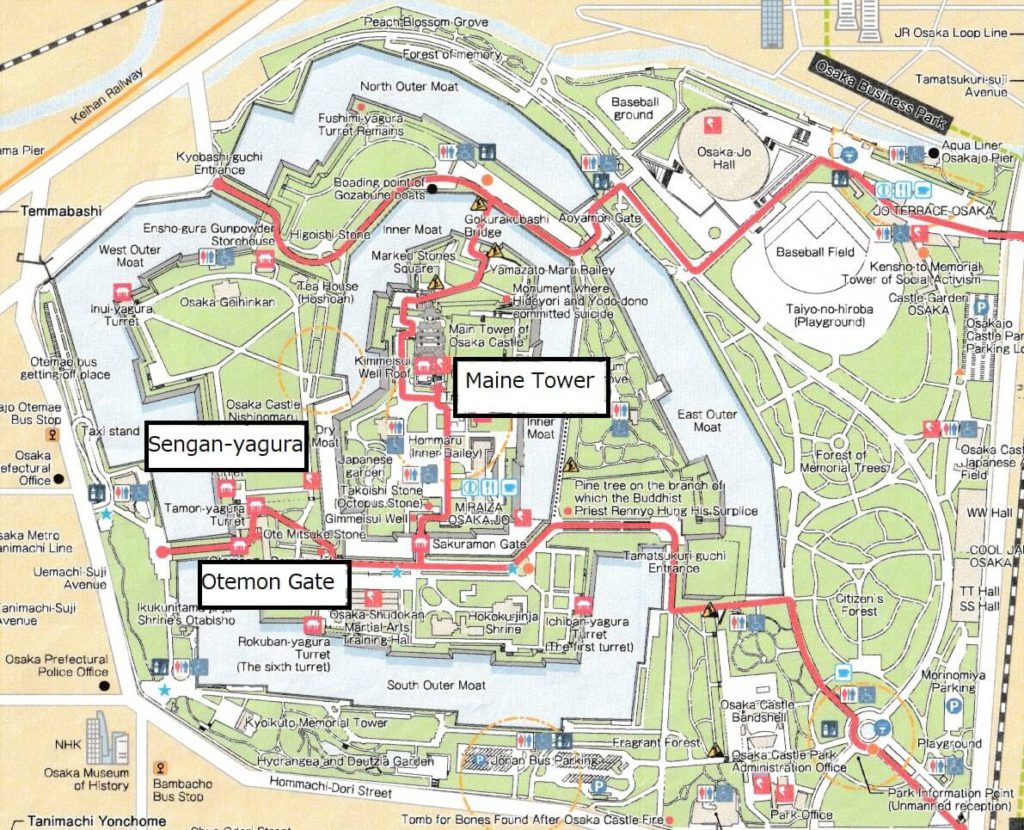
Otemon Gate
This gate was seldom fully open. The small door on the right side was always open for people to pass through, but this gate was usually closed. Even when the local feudal lord came to the castle, this gate was half-open. Only when Shogun came to visit this castle did this gate fully open. He was always in Edo, which is now Tokyo, and seldom came to Osaka, so it was only occasional. Now this gate is always open. Visitors can pass through this gate like a Shogun.

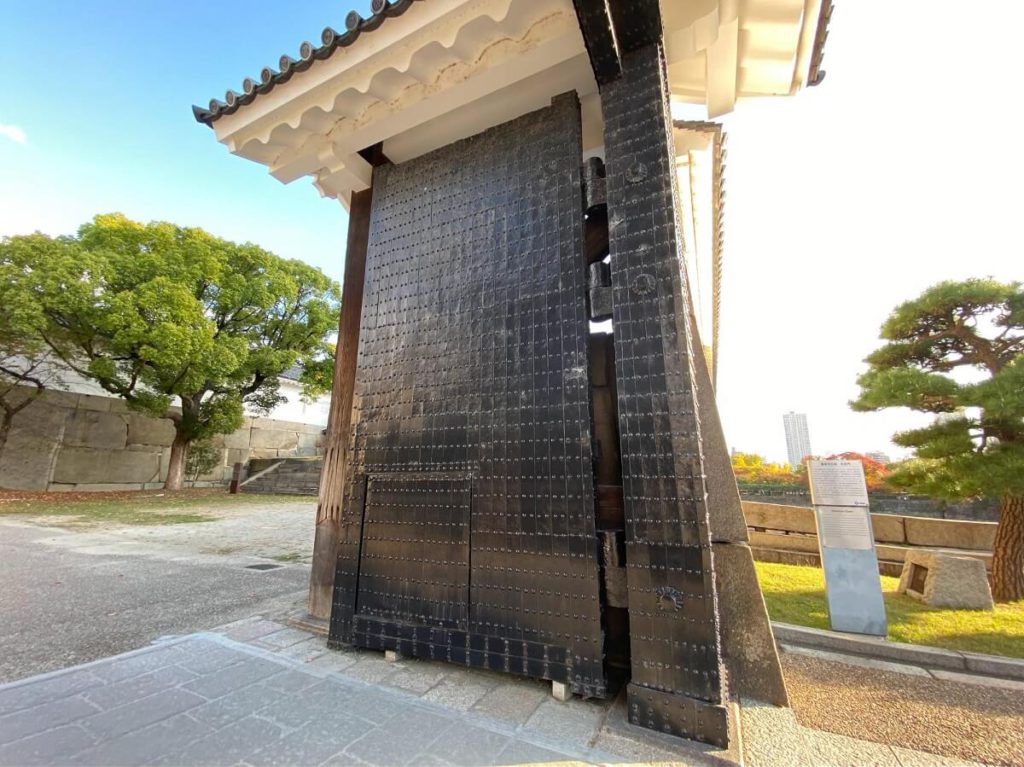
This gate is iron-plated to make it durable. You can see that the large roof is on top of the front pillars, and the small roofs are supported by the front and rear pillars on both sides. That is the Koraimon gate style. The Japanese Government designated this gate as a National Important Cultural Asset.
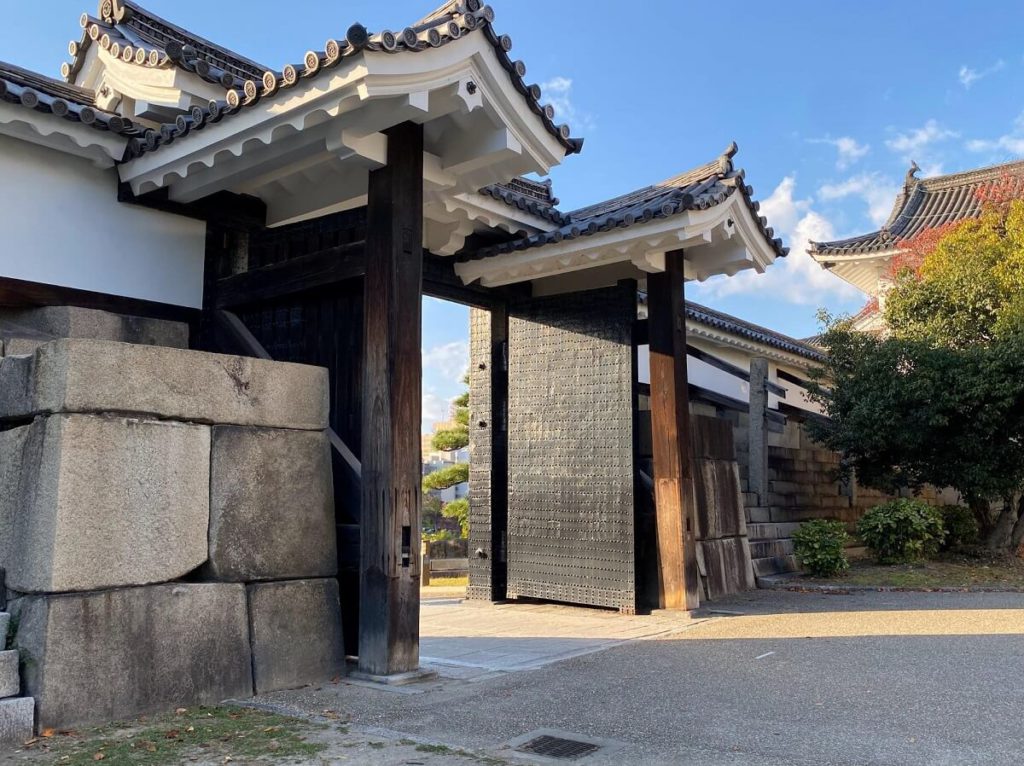
Construction skill
Tokugawa shogunate constructed the second Osaka Castle in about nine years. Look at the stone walls on the left side of this gate. Each stone has a different size, and they are piled randomly. But, on the right side, the stones are about the same size and stacked neatly. Because they started building from the left side and finished on the right side, you can see that their construction skills improved over the course of nine years.
Comparison of the left and right side stone walls
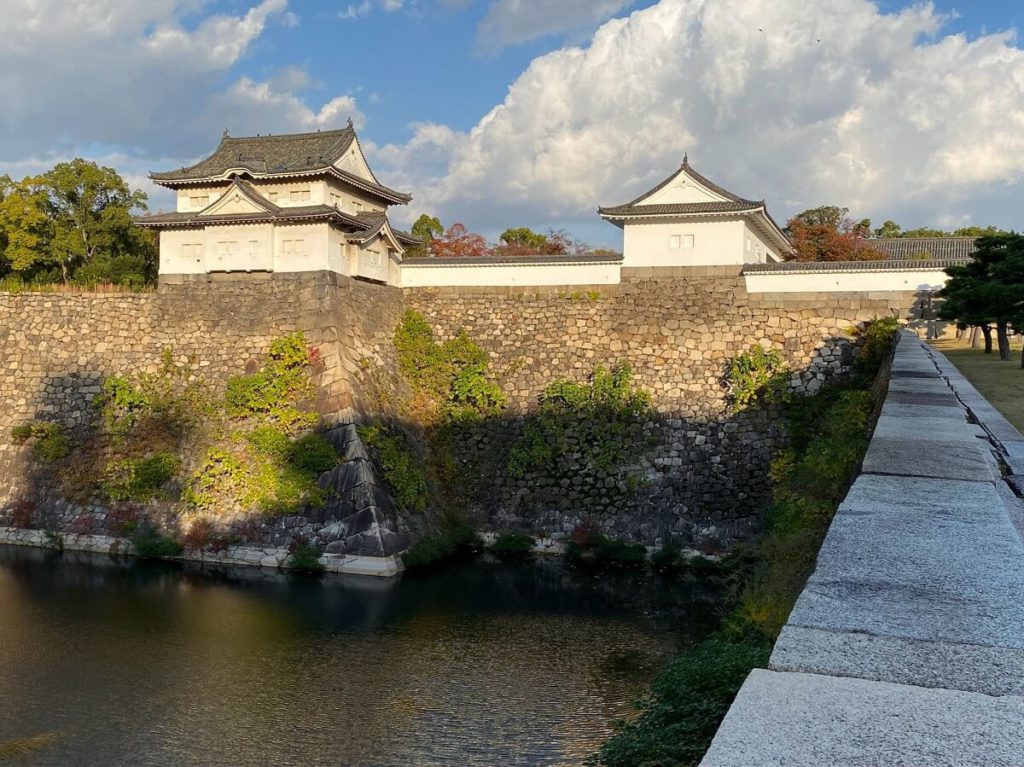

Sengan yagura
That watchtower is Sengan Yagura. Sengan means a lot of money, and Yagura means a watchtower. That name came from the previous temple. There used to be a temple named Ishiyama Honganji Temple here, and Oda Nobunaga attacked the temple to take its place. He was a strong feudal lord and wanted to unify Japan. But he struggled to break through the gate because the temple soldiers protected the gate from the watchtower. Then Oda Nobunaga told his retainers, “if you succeed in breaking that watchtower, I’ll give you Sengan.” So that tower is still called “Sengan Yagura” even now. The legendary name reflects the desire of the castle’s owners to remain strong.

Outeguchi Masugata
Here is Ote-guchi-masugata. This is a square-shaped courtyard approaching the inner area. This area used to play an important role in preventing enemies from invading the castle. It was a trap. If enemies broke through the main outer gate and they rushed in here, this curved access slowed them down. And Osaka Castle’s soldiers threw spears or shot enemies with guns from the windows of those watchtowers. Those watchtowers are on top of huge stones.
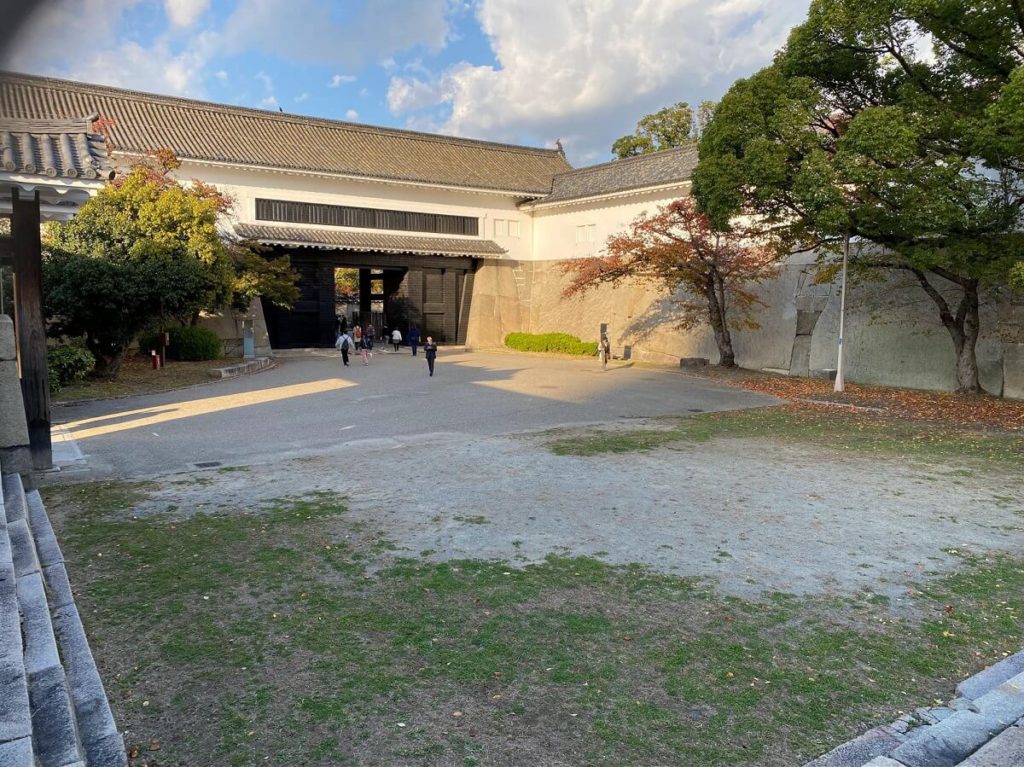
Huge stones
You can see the gigantic stones in front of you. These huge stones showed the power of this castle’s owner as part of the main entrance. These three stones are called Otemitukeishi, Otenibanishi, and Otesanbanishi. They are the 4th, 5th, and 8th biggest stones of this castle. They used to be one giant stone. They were split into three from one and placed symmetrically. On the surface of the stones, there is some evidence that these stones used to be one. If you stand between them and look at the left and right, the left one is slightly dented, and the right one is slightly protruding. It’s an exact fit. And there is a black granite pattern on the left side. And the same one is also on the right side. It’s symmetrical. You can see they used to be one. And they are thinner than you think. The thickness is less than about 1 meter. They had to be thin because they needed to be as light as possible to make transportation easier. But these stones are still estimated to be over 100 tons.

How do you think people about 400 years ago cut and transported these huge stones? They didn’t have a machine or car. First, a specialized stone worker read the texture of the stone’s surface and drilled many small holes along with the texture. They hammered wedges, which were iron tools, into these holes from opposite directions, and then split the stones. After that, they loaded the stones onto ships by utilizing high and low tides from the island in the Seto inland sea. After arriving at the port, they put wood sticks on the ground and a large group of men transported stones using wooden sleds to pull them. (see below)

Picture by Gentaro Kagawa
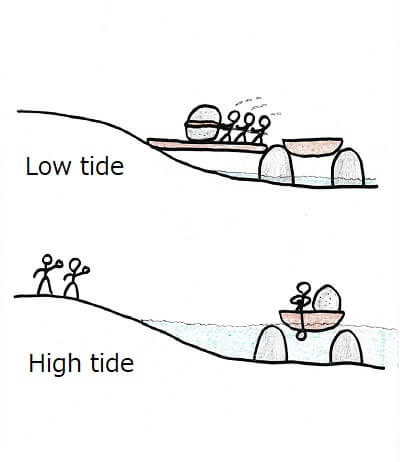

Picture by Gentaro Kagawa
Aren’t you surprised about the power and wisdom of people long ago? If you’re interested in Japanese castle construction, you should visit the site below. I highly recommend the book “Gentaro Kagawa, ‘All-Color Thorough Illustrations of Japanese Castles,’ One Publishing Co.”
https://rekishi.kagawa5.jp/香川元太郎-著書のご紹介/
(I appreciate Mr. Kagawa giving permission to use his illustrations.)
I will wrap up this story now. I’ll take you to the inner part of this castle’s grounds next time. Until then!
I live in Osaka. I’m a volunteer guide trainee. I want to take you to many good sightseeing spots when you visit Osaka!

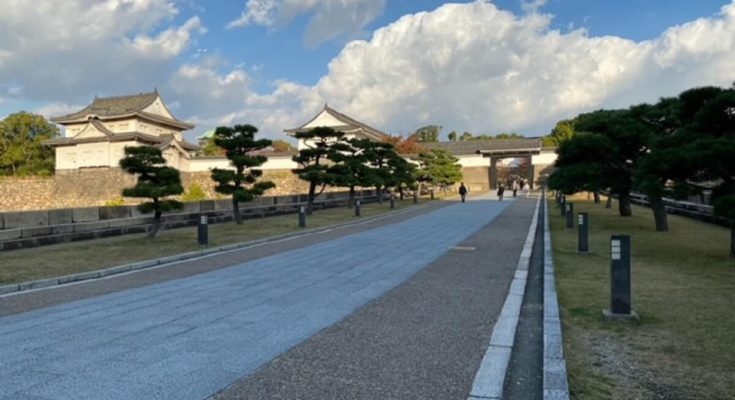



 HTJ has a YouTube page! Check it out
HTJ has a YouTube page! Check it out